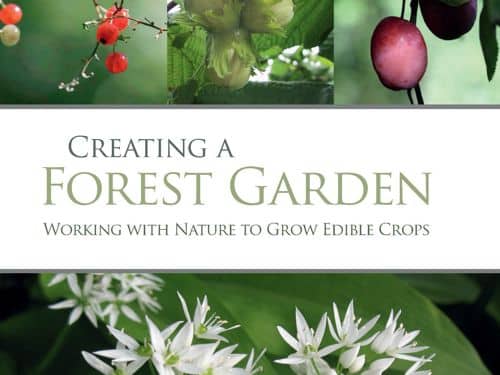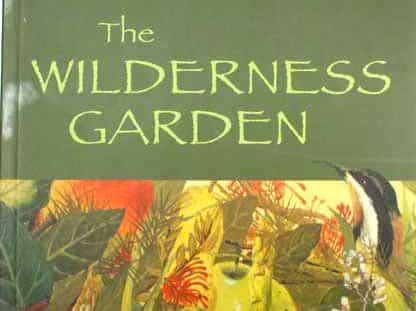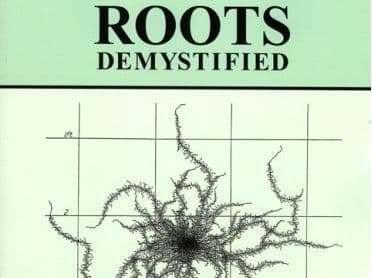Here’s a bunch of Forest Garden books and resources we’ve put together for the students of our Food Forest Garden workshops. There is so very much to learn, read, think about and absorb here! And it’s all incredibly useful and exciting information.
Many thanks to Milkwood Farm’s resident plant-whisperer Dan Harris Pascal for putting these resources together for everyone…
Edible Forest Gardens Volume 1 & 2
By Dave Jacke with Eric Toensmeier. Published by Chelsea Green.
Volume 1 is an academic look at the ecological theory behind forest gardens.
Volume 2 is a more practical volume looking at the key points from volume 1 and how this influences how we design and build our gardens. It has lists of useful species, nectary calendars, practical design hints and tips and a lengthy discussion of a forest garden pattern language. www.edibleforestgardens.com
Creating A Forest Garden: Working with nature to grow edible crops
By Martin Crawford. Published by Green Books.
This book is a fantastic resource written by Martin Crawford of the Agroforesty Trust in the UK.
The book has large colour photos of different forest garden plants from every layer as well as information on designing each layer, propagating plants, nectary calanders, windbreak design, edible fungi and species to grow on pathways.
West Coast Food Forestry: A Permaculture Guide
By Rain Tenaqiya. Self-published.
If you find the book useful the author asks that you donate $10 to him for his time and effort making the book.
This book has pictures of established forest gardens on the west-coast of the USA and lots of great information and pictures regarding species for every layer and different climates. [email protected]
The Wilderness Garden
By Jackie French. Published by Arid Books.
Jackie French is Australia’s Homegrown forest gardener and the wilderness garden is a great book looking at the different plants you can grow in you garden, where they fit and how they interact with the wildlife that we have in Australia.
Wild Food in Australia
Useful plants in Australia
Wild Medicine in Australia
By A.B & J.W. Cribb. Published by Fontana Books.
These three books were published by a husband and wife botany team that wanted to document all the potentially useful plants in Australia.
A great way to find uses for plants in your area you never new existed.
Drip irrigation for every landscape and all climates
By Robert Kourik. Published by Metamorphic press.
Robert Kourik is a landscape architect who writes accessibly about irrigation systems.
The book covers terminology, fittings and assemblies and is also available from Robert’s website chapter by chapter or all together
Roots Demystified
By Robert Kourik. Published by Metamorphic Press.
This book is a great guide to how plant roots grow and ways that you can design plantings and plant plants based on what the science is telling us.
Really useful for it’s chapter on tree planting.
Permaculture Plants
By Jeff Nugent & Julia Boniface. Published by Chelsea Green.
This is an excellent reference book looking at useful plants that can be grown in Australia (and outside Australia, too!).
It covers species for windbreaks, nut trees, bee forage and investigates the pros and cons of different varieties available.
Online Resources:
 Apios Institute:
Apios Institute:
A collaborative information database about different forest garden species, guilds, polycultures and forest gardens around the world. Still growing but fast become the definitive resource on the web.
Membership of $25 gets you access for a year and allows you to find out head of information about forest garden plants and upload your own plantings.

Global Land Repair:
A company founded by Matt Kilby in the Southern Tablelands and based in Canberra. Matt and his team specialize in planting trees in exposed sites and have range of products to ensure tree planting success including tree guards, tree-starter powder and a micorhyzal spore mix to get those fungi actively eating the soil and feeding your trees.
They also have a number of videos showing tree planting techniques.
 Plants for a future:
Plants for a future:
A fantastic free database with information on over 7000 useful plants including their origins, place in successions, edibility and medicinal uses.
Many thanks to Dan Harris Pascal for compiling the above info for us all!
Related posts:
- Milkwood Food Forest Garden Plantathon
- Our forest garden design: the future is forested and foodlike
- A soggy but scintillating permablitz
























Hi All,
Has anyone thinking about forest gardens in areas with possums and wallabies? We’re in Southern Tasmania and our vegie garden (which includes fruit trees and berries), is completely netted. I love everything about forest gardens but can’t think how to out-compete the possums. Unless we plan to sacrifice part of it to the possums….
Sadie
Hey Sadie, we’re leaving open the possibility at this stage that we may need to net the central garden – we’ll see how we go.
One long-term plan is a sacrificial ring of plantings around the central garden which is netted as needed – have to wait and see what grows, and what shows up 🙂
Do you mind if I quote a couple of your articles as long
as I provide credit and sources back to your blog?
My blog site is in the exact same niche as yours and my users would genuinely
benefit from some of the information you present here. Please let me know if
this okay with you. Cheers!
Copying the first 2 paragraphs with a link to the milkwood.net site to read the whole article is fine, but please dont just copy the whole article – cheers!